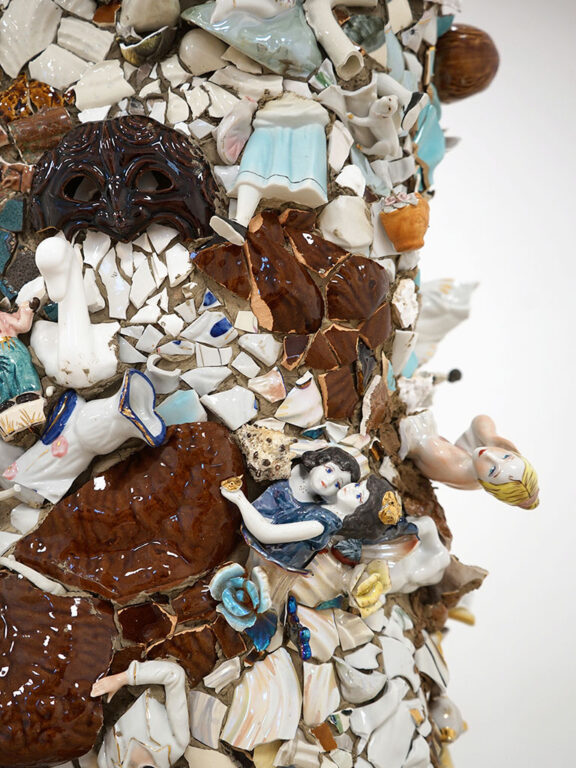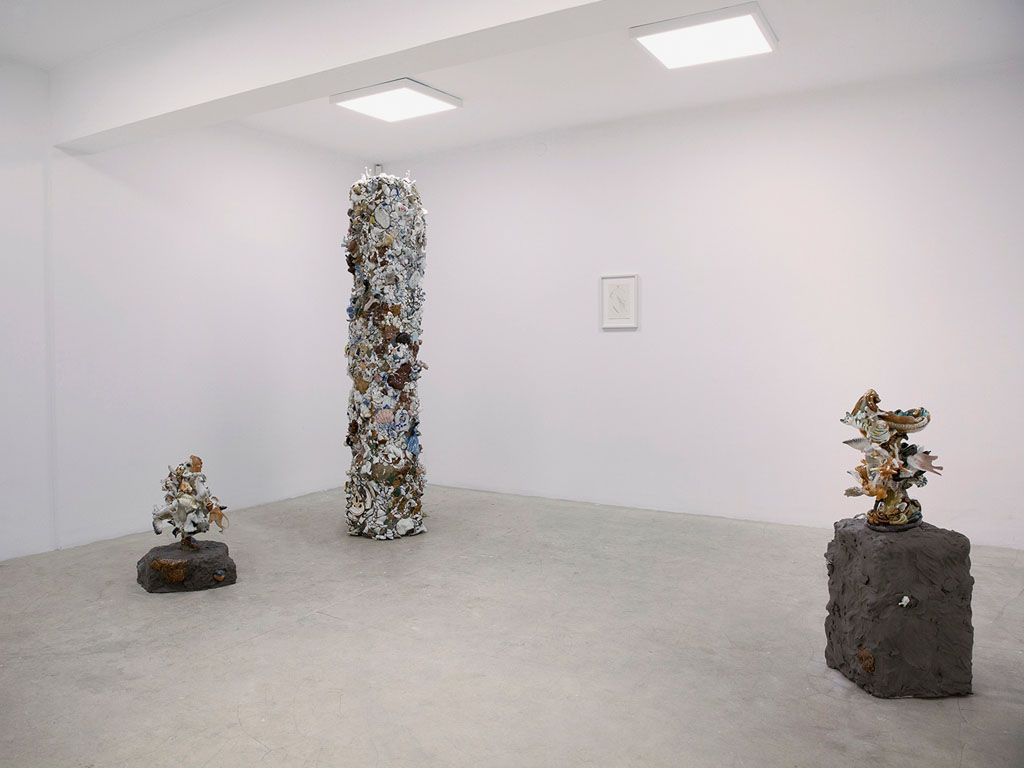without lashes
Nina Paszkowski / Olga Holzschuh / Justyna Smoleń
13.06 – 20.06.2021
CracowArtWeek KRAKERS
Dietla 7 Street, Krakow
The lifespan of human eyelashes is less than half a year. Thus, the fortification of our eye is in constant construction and reconstruction. Unlike teeth, lashes are not given to us once in a lifetime and unlike the hair on our head their length remains the same. This defence mechanism, fragile as it is, cannot cope with everything – it will catch dust but is powerless against the scalpel and will only respond to a well-known (and tame) threat. Yet what if Gregor Samsa, getting out of bed in the morning, saw not a cockroach in the mirror but a face without lashes?
This fantasy, an alternative to Kafka’s short story, offers a metaphorical take on the story of the virus that began in late 2019. Transformation, a key word, is here understood on a microscale. Because despite the global nature of the phenomenon, it is ordinary gestures and relationships that have changed: shopping is no longer a careless act while shaking hands on the street or picking up a parcel poses a threat. On the other hand, it is the global aspect of the phenomenon, its universality and totality that make us think of the liminal, or that which is central to ritual as anthropologist Victor Turner describes. Characterised by a state of suspension, the liminal is a mode in which we reject the old in order to prepare for the arrival of the new. Isolation is a prerequisite in preparing for this transition. Forced quarantines and restrictions somehow caused a shared liminal state, the consequences of which are not yet known. The future, in terms of Derrida’s différance, is not futur, something that can be planned, but l’avenir: that, for which one cannot prepare – as Olga Tokarczuk puts it – a black swan.
Liminality is the starting point for the exhibition of Nina Paszkowski, Olga Holzschuh and Justyna Smoleń, who use their artistic practices to set the scene for acts of change.
Nina Paszkowski’s monumental cut-out visually evokes underwater flora and fauna that adjusts its movement to the rhythm of flowing water, while creating a closed circuit of energy – a form that devours itself and in doing so renews and transforms itself. Left to itself, monstrous, it undergoes its own intimate ritual. The element of water has been tamed by the form of a folk cut-out, as if in preservation. The paradox of this juxtaposition is evident in the way the work is presented: there are gaps between the wall and the paper, the planes do not match, the tamed monster rebels spectacularly, conjuring wildlife.
Olga Holzschuh refers to her latest project with the evocative title “Things are insecure, but solid”. The works on display, however, are made of materials commonly not associated with durability: soap, aluminium, human eyelashes. The title rather suggests a sensitivity towards delicate matter and faith in its potential – just like a single hair has surprising mechanical strength. The intimacy of the works also seems to reflect the limitation of physical encounters during the pandemic, the alternative to which are online meetings that only fleetingly grasp human presence. Modern technology comes with drawbacks, for example when on the screen of a laptop or smartphone a speaker’s face is deformed by a glitch – an enlarged eyelash that then settles on the cheek. It is impossible to touch the cheek and look at the dead lash.
Justyna Smoleń uses porcelain in her practice. At first, the sculptures made of figurines seem to be part of a museum exhibition. Only after a while does one notice the hybridity of the porcelain creations – surreal, decapitated, with heads and limbs swapped, combining human, animal and plant elements. The strategy of using destructed porcelain is further transformed in the way the totem is displayed in the show – not only a significant change in scale but also – and above all – a step towards folk decorativeness. It recalls the secondary use of ceramics rejected from factories to decorate objects in public space. For example, in the Małopolska region one can often find flower pots made of concrete and decorated with ceramic remnants from Kamionka in Łysa Góra. The economy of material recycling becomes enchanted with a magical function. Objects that inhabit domestic spaces, dusting on shelves, are involuntary spectators and companions of forced isolation, which – thinking in terms of the ritual – is a necessary stage for transformation.
Viewed from a distance, a year and a half of our new reality has seemingly not changed much – the virus has not left the scene as if after a fire. Humanity has not turned into cockroaches, but rather lost eyelashes – an elementary, though underestimated, imperceptible sense of security. Yet this state of suspension comes with its own potential, just like a dead lash falling on a cheek can be an invitation to wish.
Katarzyna Nalezińska














